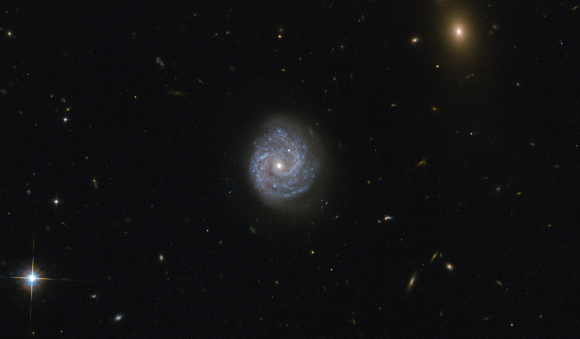NASA has released a stunning image snapped by the NASA/ESA Hubble Space Telescope of the galaxy LEDA 1245565.

This Hubble Advanced Camera for Surveys image shows the spiral galaxy LEDA 1245565, which lies in the constellation Virgo, about one billion light-years away. Image credit: NASA / ESA / Hubble / Judy Schmidt, www.geckzilla.com.
LEDA 1245565 is a spiral galaxy situated about one billion light-years from Earth.
Also known as RX J1140.1+03072 and MASX J11400874+0307114, the galaxy lies in the constellation Virgo and presents an interesting puzzle.
At first glance, LEDA 1245565 appears to be a normal spiral galaxy, much like our own Milky Way Galaxy, but first appearances can be deceptive.
Milky Way, like most large galaxies, has a supermassive black hole at its center, but some galaxies are centered on lighter, intermediate-mass black holes.
LEDA 1245565 is such a galaxy — in fact, it is centered on one of the lowest black hole masses known in any luminous galactic core.
What puzzles astronomers about this particular galaxy is that the calculations don’t add up.
With such a relatively low mass for the central black hole, models for the emission from the object cannot explain the observed spectrum; unless there are other mechanisms at play in the interactions between the inner and outer parts of the accretion disc surrounding the black hole.
The color image of LEDA 1245565 was made from separate exposures taken in the visible and near-infrared regions of the spectrum with Hubble’s Advanced Camera for Surveys (ACS).
It is based on data obtained through two filters: a blue filter (F435W) and a near-infrared filter (F814W).
The color results from assigning different hues to each monochromatic image associated with an individual filter.







